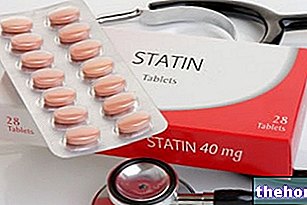
PLEASE NOTE: MEDICINAL PRODUCT NO LONGER AUTHORIZED
What is MabCampath?
MabCampath is a concentrate in solution for infusion (drip into a vein). MabCampath contains the active substance alemtuzumab (10 mg / ml or 30 mg / ml).
What is MabCampath used for?
MabCampath is an anticancer medicine indicated for the treatment of patients with chronic lymphocytic leukemia (CLL). CLL is a cancer of the lymphocytes (a type of white blood cell). MabCampath is used in patients who are not adapted to combination therapies including fludarabine (another drug used in the treatment of leukemia).
The medicine can only be obtained with a prescription.
How is MabCampath used?
MabCampath should be administered under the supervision of a physician experienced in the use of cancer therapy. Patients should be given steroids, an antihistamine and a pain reliever before the initial dose and before each dose increase. In addition, antibiotic and antiviral medicines should be given. administered during therapy and after therapy.
MabCampath is given as an infusion lasting approximately two hours. During the first week of treatment, MabCampath should be administered in increasing doses: 3 mg on day 1, 10 mg on day 2 and 30 mg on day 3, provided each dose is well tolerated. This mode of administration is called "dose intensification". Thereafter, the recommended dose is 30 mg per day given three times per week (every other day) for up to 12 weeks.
Patients should be monitored during treatment both to observe their response and to check the blood levels of platelets (the constituents of the blood that help clotting) and neutrophils (the white blood cells that fight infection): if they are too low, treatment must be suspended or discontinued. For further details, see the Summary of Product Characteristics (also included in the EPAR).
How does MabCampath work?
Alemtuzumab, the active substance in MabCampath, is a monoclonal antibody. A monoclonal antibody is an antibody (a type of protein) designed to recognize and attach to a specific structure (called an antigen) found in certain cells in the body. Too many lymphocytes are produced in CLL. Alemtuzumab was designed to attach to a glycoprotein ( a protein coated
with sugar molecules) called CD52 which is found on the surface of lymphocytes. Upon binding, the lymphocyte dies and thus the CLL is kept under control.
How has MabCampath been studied?
MabCampath has been studied in four main studies involving a total of 446 patients with CLL. One study involved 297 previously untreated patients. The study compared the effectiveness of a twelve-week treatment with MabCampath with that of a one-year treatment with chlorambucil (another anticancer drug). The main measure of effectiveness was the time interval to disease progression or to death of the patient.
The other three studies involved a total of 149 patients who had already received other treatments. In these studies, MabCampath was not compared with other treatments. The main study involved 93 patients who no longer responded to fludarabine treatment. The main measure of effectiveness was the overall response to treatment.
What benefit has MabCampath shown during the studies?
In patients who had not received any previous treatment, MabCampath was more effective than chlorambucil. For patients treated with MabCampath, the mean interval before disease worsening or patient death was 14.6 months, compared with 11.7 months for patients treated with chlorambucil. In the main study in previously treated patients previously, 33% of patients responded partially or completely to treatment with MabCampath Similar results were seen in the other two studies in previously treated patients.
What is the risk associated with MabCampath?
Undesirable effects occur in approximately 97% of previously untreated patients and in approximately 80% of previously treated patients. The most common side effects (seen in more than 1 in 10 patients) are: infections, hypotension (low blood pressure ), nausea, hives, rash, fever, chills, low blood cell content (granulocytes, platelets and red blood cells), anorexia (loss of appetite), headache, dyspnoea (difficulty in breathing), vomiting, diarrhea, itching, hyperhidrosis (excessive sweating) and fatigue. For the full list of side effects reported with MabCampath, see the package leaflet.
MabCampath must not be used in people who may be hypersensitive (allergic) to alemtuzumab, mouse proteins or any of the other ingredients. MabCampath must not be used in patients:
- with active infection, which has spread throughout the body;
- with HIV infection;
- who have secondary active tumors;
- pregnant.
Why has MabCampath been approved?
The Committee for Medicinal Products for Human Use (CHMP) concluded that the efficacy of MabCampath has been demonstrated, although there is no news of any studies directly comparing MabCampath with combination treatments, including fludarabine, which are widely used for the treatment of CLL patients. The CHMP therefore decided that MabCampath's benefits are greater than its risks in the treatment of B-cell CLL patients for whom fludarabine chemotherapy is not suitable. The Committee recommended that it be released. marketing authorization for MabCampath.
The authorization of MabCampath was initially granted under "exceptional circumstances" as, for scientific reasons, it was not possible to obtain complete information on the medicine. As the pharmaceutical company provided the requested additional information, the above condition was no longer valid. July 4, 2008.
What measures are being taken to ensure the safe use of Mabcampath?
The pharmaceutical company that makes MabCampath will provide a booklet containing information on the safety of the medicine to all doctors in all Member States who prescribe MabCampath.
Other information about MabCampath:
On 6 July 2001, the European Commission issued Genzyme Europe B.V. a "Marketing Authorization" for MabCampath, valid throughout the European Union. The "Marketing Authorization" was renewed on 6 July 2006.
For the full version of the MabCampath EPAR click hereThe information on MabCampath - alemtuzumab published on this page may be out of date or incomplete. For a correct use of this information, see the Disclaimer and useful information page.




























